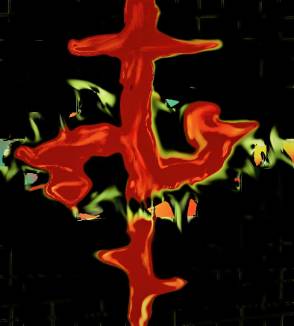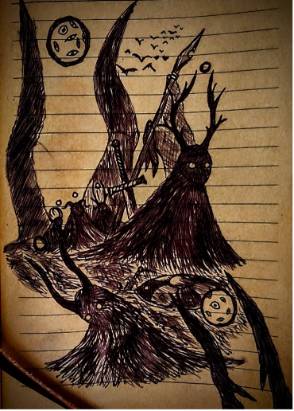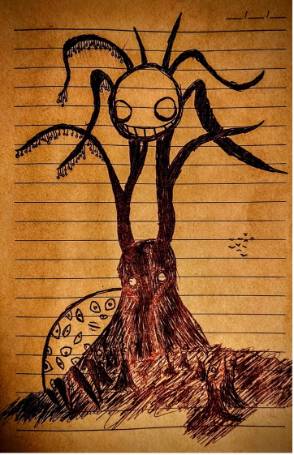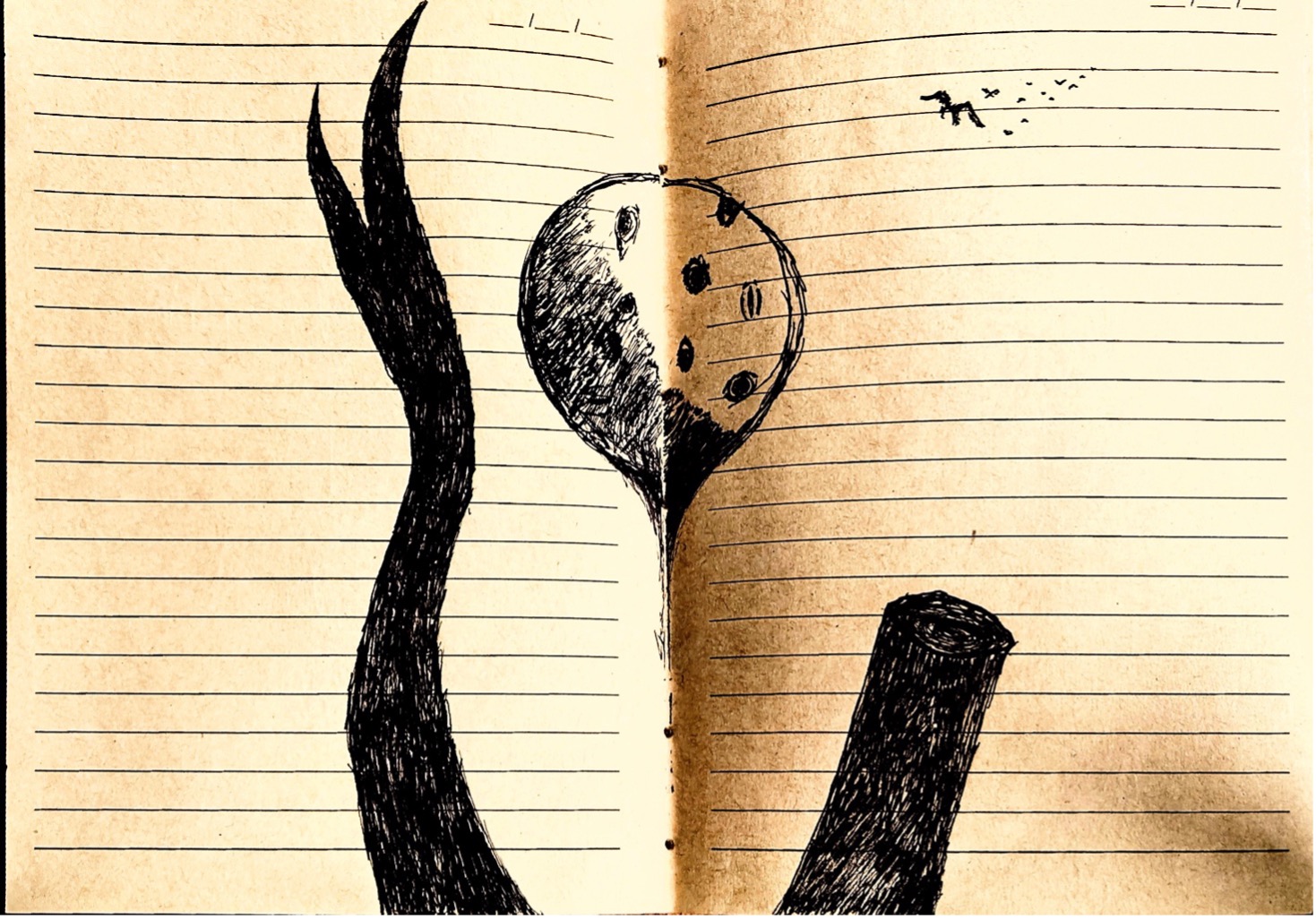Original Music Compositions by Chris Summers
Amidst Fallen Towers
By Christian Summers
Department: Music
SCE Advisor: Dr. Kenneth Schweitzer

At the beginning of the year, I began working on Amidst Fallen Towers. Without much direction, I began writing a narrative outline and drawing pictures to give me some sort of path forward. It was a practice I was used to from when I thought of myself as a fantasy writer in high school. In high school, I began playing guitar as a form of meditation and to encourage discipline within myself. It has always felt good to create. Be it a god-complex or stray artistic vision, I've always sought out knowledge that enhanced that ability. I'm often seen carrying around leather-bound notebooks that contain all my ideas.
I was heavily influenced by Bon Iver who over the past few years have been incorporating a lot of electronic musical concepts into their work. Coldplay's release of Coloratura greatly affected the way I mixed. That song combines both concepts from pop and electronic sound-scape music which led to my intense use of reverb in the creation of my thesis. I was also influenced by a multitude of twentieth-century composers, such as Claude Debussy and Henry Cowell. Finally, I wanted to mention Donda by Kanye West. Though our music isn't entirely similar, he represents what it means to be an artist and I have constantly played that album since its release.
If it were not for the quarantine, Amidst Fallen Towers would have never made it out of my notebooks. Time is by far the most important factor in art. When was it created? How long did it take? What was the artist thinking about during that time? What was happening in that time period? Time informs the nature and meaning behind all things. That piece contained a long and drawn-out narrative about the meaning of love and the idea of faith. The main character is so quick to abandon his faith for love only to find that he's been tricked by God in the last movement. When I first pitched the idea, I had thought about how the narrative would ultimately be lost within the music. Something that had bothered me greatly about music in the past few years was that I had felt that my own need to project some sort of meaning onto a melody or rhythm was killing my music. I wondered if people would agree with my comments about love and religion or if I was getting in my own way. I was satisfied with the idea that the meaning would blend in. There was no reason to reject any of the ideas that inspired the piece because I was in complete control. There were no lyrics to inform the listener of the hidden meanings behind movement three “The Frozen Herald”. All anyone had to go on was the title, the music, and the time. When it was written, what I was doing, who I was talking to; all of that seemed more important than what I was saying with the music.
Orange Moon Lucifer
By Christian Summers
Department: Music
SCE Advisor: Dr. Kenneth Schweitzer
When I finally got around to writing Orange Moon Lucifer, I knew that I had to use everything I had learned from the previous work to capture exactly what I wanted. The piece started as an event. Two years ago, I found myself in a predicament. That semester I had just become a music major and felt insignificant when compared to my peers. That was coupled with an unfortunate romantic life that left me feeling depressed. After a series of awkward conversations and one heart-aching phone call, I ended up standing outside Sassafras Hall listening to 33 “God” by Bon Iver. The sun was setting and when I looked up there it was; a great orange moon sitting in the sky looking down on me. In that moment, I felt defeated, lost, and weak, yet that moon inspired so much hope within me. Over time, events become memories and those memories fade into either ideas or lies. Occasionally, I would have dreams about that moment. Orange Moon Lucifer is a dream about that event. It's distorted and broken up. Dreams tend to be vague. To replicate the vagueness meant distancing the meaning of the music from the piece. So, I pulled out a pen and my notebook and began drawing the three parts of my dream. I didn't draw the dream realistically but instead focused on theme.

Orange is about defeat. Dark beings tread a fresh battlefield with haunting looks in their eyes and celestial bodies hovering between their horns. The celestial bodies have eyes as well, but they are drawn with pupils rather than without. I wanted to emphasize that feeling of the moon looking at me. The dark beings have long, hair-like cloaks that obscure their bodies. It is hard to tell if they are standing or sitting and their actually size is hard to determine. Birds fly in formation in the background of the image. Birds inherently represent freedom. The piece starts with long bass note and a bass drum that erupts into a melodic synth. Strings are eventually brought in along with an atmospheric bus sound that I used to pull the piece closer towards contemporary art. The entire point of the beginning is to promote drama. Nothing is more dramatic than defeat. The piano begins to pull away from defeat just like how the human brain often distracts an individual from their problems. It eventually falls back into the sounds of defeat and plays a slow chord progression. The music begins to spiral out and lands on brief silence. When one bottles up the feelings of doubt, eventually they erupt. The end of Orange is representative of the fear, intensity, and hope that comes out of defeat. I wanted it to feel as if the listener was running from something in a forest. Up until that point in the piece, I had kept the tempo at a slow pace. The end of the first movement was an excellent opportunity to liven things up before the start of the second movement.
Moon begins with that same piano chord progression at a different tempo. It may be hard to catch at first glance because its original introduction was so brief in the first movement. The second movement is about hope. The first musical idea in the movement represents the anxiousness that hope instills within us. Hope does as much damage as it does good. Hope also inspires passion which I added in through the transitions in this movement. Hope brings joy too. Towards the end of the movement, I introduce an innocent celesta and oboe part that transforms into the final piano part of the movement. I wanted to show how hope is altered as you age. In a way, the celesta is a younger version of myself, and the piano represents who I am now.

The image I drew for Moon is a large horned-being standing above much smaller horned-beings. The birds are distant in this image because I often distance my ideas of freedom and my ideas of hope from each other. There is a large moon with many eyes behind the creature, but the moon between his horns has eyes without pupils and a grin. The lack of pupils represents a lack of intention, and the grin represents joy. Hope often blinds humans from the nature of our own intentions.
The last image and movement are titled Lucifer. I have always had a fascination with mythology. Lucifer is supposed to be a prideful angel of light. The older I get the more I realize how my pride gets in my way. The way I feel about myself is sometimes the antagonist in my story. I tend to see pride as an evil from which no one can escape. When one is defeated, their pride is what shall hurt them the most. The movement begins with an allusion to a musical idea introduced in the first movement. I use dissonance to represent the evils of pride and specifically chose sounds and notes that would match the average listener's idea of something creepy. There's a very odd bass section in the middle of all of it that is meant to show the ridiculousness of pride. After that brief commentary, Lucifer ends with a section about moving on. I wanted to write something that was about me moving on from my defeats, my hope and pride, and from college. I still use mysterious sounds and push forth a peculiar duo-guitar part. I wanted to end with an instrument that I have a deep connection to, and the guitar was the only possible candidate. In the image, there are just horns, birds, and a moon with eyes. The moon is heavily shaded which makes it appear as though it is being brought into the light. One of the horns is snapped to show the damage caused by pride. The birds make another appearance because we get so prideful when we are free.

In conclusion, Orange Moon Lucifer is about defeat, freedom, hope, and pride. I used orchestral instruments to illustrate my understanding of traditional Western music and electronic instruments to represent my abilities as a producer and musician. The project was mostly written using MuseScore 3 and was mixed and edited using Ableton Live 11. The orchestral VST plugin pack that I used is called the Hollywood Diamond Orchestra by EastWest.